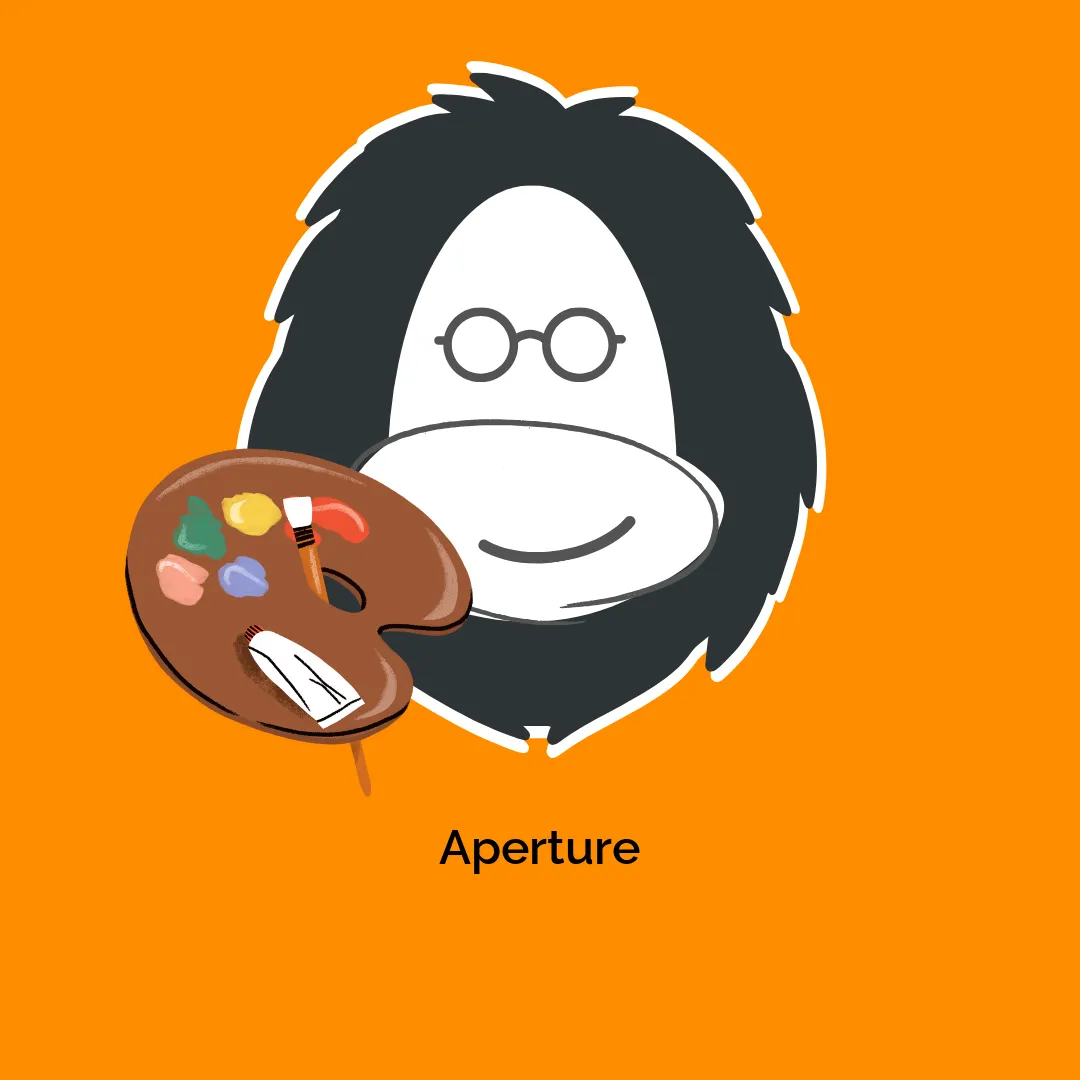Discovering the Power of Aperture in Photography
Aperture plays a crucial role in photography, acting as one of the three primary components of the exposure triangle, alongside shutter speed and ISO. Understanding aperture can be a game changer, whether you’re a budding photographer or a seasoned professional, allowing you to take greater control over your photographic creations.
What is Aperture?
Simply put, aperture refers to the opening in a camera lens through which light passes. This opening is adjustable, meaning photographers can manipulate its size to allow more or less light to hit the camera’s sensor. It’s commonly measured in f-stops, such as f/2.8, f/4, f/5.6, and so forth. The lower the f-stop number, the larger the aperture opening and the more light that is allowed in. On the contrary, a higher f-stop number indicates a smaller aperture, limiting light entry.
The Importance of Aperture in Photography
Aperture does more than just control the amount of light that hits the sensor; it also significantly influences the depth of field in a photograph. Depth of field refers to the range within a photo that appears in focus. A wide aperture (such as f/1.8) creates a shallow depth of field, which allows for a blurred background, focusing attention on the subject. This technique is particularly popular in portraits, as it accentuates the subject while softening distracting elements in the background.
Conversely, a narrower aperture (such as f/11) increases the depth of field, ensuring more of the scene is in focus. This is often sought after in landscape photography, where photographers aim to capture majestic mountain ranges or spacious fields in their entirety.
Balancing Light and Depth with Aperture
As photographers, we often find ourselves in different lighting conditions. Here is where the aperture setting comes in handy, serving as a critical adjustment tool. For instance, on a bright sunny day, a narrow aperture helps avoid overexposure while still achieving great detail throughout the scene. Meanwhile, as twilight descends and light fades, widening the aperture allows more light to enter the camera, enabling a successful shot without using a slower shutter speed that could introduce motion blur.
It’s also vital to note the interplay between aperture, shutter speed, and ISO. Each works in tandem to produce well-exposed images. For example, if a photographer opts for a wider aperture to capture a portrait with that lovely blurred background, they might need to compensate with a faster shutter speed to prevent overexposure, especially if shooting in bright conditions.
Creative Uses of Aperture
Beyond technical functions, aperture serves as an artistic tool. It allows photographers to express their creativity through how they choose to highlight subjects and create ambiance in their work. By playing with aperture settings, one can achieve stunning results. Here are a couple of examples:
-
Portraits: As previously mentioned, a wide aperture (like f/1.8) softens background distractions and emphasizes the subject. Photographers can create dreamy, intimate portraits that draw viewers’ eyes to the highlight of the image, typically the eyes or facial features.
-
Landscapes: In contrast, landscape photographers often use smaller apertures (such as f/16 or f/22) to ensure sharpness across the entire frame. This is essential in capturing expansive scenes, from sweeping valleys to intricate details in foreground subjects like flowers or rocks.
-
Astrophotography: Aperture is also vital in astrophotography. Wide open apertures allow more light to reach the sensor, which is essential for capturing the intricate colors and details of the night sky. This enables photographers to take stunning shots of the Milky Way or other celestial phenomena.
Factors Influencing Your Aperture Choice
Choosing the right aperture affects not only exposure but also the visual narrative you wish to convey through your photos. Here are several key factors that influence this choice:
-
Lighting Conditions: As mentioned earlier, varying light conditions necessitate different aperture settings. Brighter settings might require smaller apertures, whereas low light is comfortable with larger ones.
-
Subject Matter: What are you photographing? Portraits call for a different approach than group pictures or landscapes. Adjusting your aperture according to your subject will enhance the image quality.
-
Desired Depth of Field: Consider whether you want a shallow or deep depth of field. Portrait photographers often lean towards shallow depth, while landscape photography typically requires deep depth.
-
Lens Characteristics: The lens you’re using will influence its performance at different apertures. Some lenses are sharpest at specific f-stops, and understanding your gear will help in selecting the best aperture for maximum image quality.
Aperture and Lens Selection
Aperture setting is mostly influenced by the kind of lens being used. Fixed aperture lenses, also known as prime lenses, usually offer larger maximum apertures and are favored for their sharpness and light-gathering ability. For example, a 50mm f/1.8 lens is widely popular for portraits because it produces beautiful bokeh and allows excellent light capture.
Zoom lenses, on the other hand, often have variable maximum apertures and may not perform as optimally at certain focal lengths or f-stops. Knowing the characteristics of your lens is essential in making the most out of your aperture settings.
The Journey of Mastering Aperture
Mastering aperture takes practice. Understanding how to adjust your camera settings in relation to different shooting conditions can initially seem daunting. However, by experimenting with various f-stops on real subjects, photographers can significantly improve their skills and understanding.
A simple exercise is the ‘Aperture Wheel’. Set up a series of objects to photograph and capture each one at different aperture settings. Take note of how depth of field changes with each adjustment. Over time, you’ll see the relationship between aperture and overall image aesthetics, which will refine your artistic eye.
Another Useful Tip: When in doubt or under pressure during a shoot, many opt for aperture priority mode (often labeled as “A” or “Av” on camera dials). This setting allows you to select an aperture while the camera automatically adjusts the shutter speed for proper exposure—allowing you to focus on creative aspects whilst ensuring well-exposed images.
Conclusion
In the world of photography, aperture serves as a gatekeeper of light, influencing both exposure and the depth of field of your images. By diving deeper into its mechanics and applications, aspiring photographers can elevate their skills and artistry. Whether you’re interested in capturing stunning portraits, expansive landscapes, or the marvels of the universe, mastering the use of aperture is an essential step on the journey to becoming a better photographer. Understanding this multifaceted concept opens endless possibilities for creative expression, ultimately driving your passion for photography even further. So grab your camera, experiment with different settings, and enjoy the journey of capturing the world through your lens!
Aperture: Download for Free on OrangoGPL
Here it is, downloading Aperture Themes for free is possible and totally within the law.
Actually, even downloading a cracked Aperture is law-abiding, as the license it is distributed under is the GPL, and this license permits the user its free modification.
So, don’t be concerned: If you were looking to buy Aperture cheaply or, directly, to download Aperture Themes nulled and, this way, obtain it one hundred percent free,, you can do that legally.
Download Aperture GPL: The option for beginner entrepreneurs
Call it whatever you want: Discounts for Aperture, download Aperture Themes GPL, download Aperture without license or download Aperture nulled.
It is absolutely law-abiding and a necessity for any beginner entrepreneur.









Reviews
There are no reviews yet.